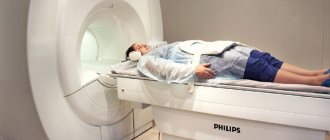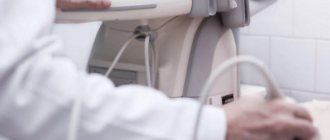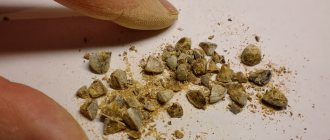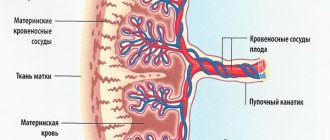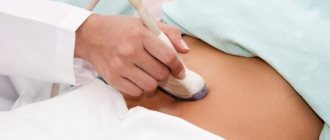Colonoscopy is a diagnostic method that is used to assess the condition of the colon mucosa. The examination is carried out using a special instrument - a colonoscope. It is a thin flexible tube with a video camera at the end. The colonoscope is inserted into the intestines through the anus.
- Goals of performing a colonoscopy
- Preparing for a colonoscopy
- Diet before colonoscopy
- Indications and contraindications
- Diagnostic colonoscopy
- Therapeutic manipulations during colonoscopy
- Colonoscopy in a state of medicated sleep
- Colonoscopy technique
- Recording the procedure on video
- Recovery after colonoscopy
- Possible complications
- Alternatives to Colonoscopy
- Colonoscopy results
Goals of performing a colonoscopy
Using a colonoscope, the doctor can detect ulcers, polyps, foci of inflammation, tumors, and sources of intestinal bleeding. In addition, during a colonoscopy, tissue samples can be obtained from the intestines for histological and cytological examination, and polyps or other formations can be removed.
It is recommended to have your first colonoscopy at age 50. Further recommendations are given individually, depending on the results of the study. Unfortunately, most colon tumors are detected at late stages. There is only one reason here - late diagnosis of the tumor. The only way to detect a tumor at an early stage is regular examination of the colon, which allows us to identify pre-tumor pathology and remove it, or carry out other necessary treatment to prevent it from degenerating into cancer. The key to curing cancer is early diagnosis. Early diagnosis can be done using colonoscopy.
Hysteroscopy of the uterus - what is it and what types are there?
Hysteroscopy is a procedure that involves inserting a tube with a microvideo camera into a woman’s vagina. Thanks to it, the gynecologist can examine in detail the genital organs, namely the uterus and its cervix. It can be carried out for the purpose of a detailed examination or minor surgery (for example, removal of a polyp). The following types of hysteroscopy are distinguished:
- diagnostic. It is aimed at a detailed examination of the genital organs to identify pathologies, complications or symptoms of any disease.
- control. It is used after surgical examinations or during them; using the procedure, a specialist evaluates the result of all previously performed manipulations.
- surgical Some kind of operation is being carried out.
Diet before colonoscopy
An important part of preparing for a colonoscopy is proper diet in the preceding days and on the day of the examination. In general terms, the recommendations are as follows:
- A few days before the procedure, you need to switch to a low-fiber diet, reduce the consumption of fresh vegetables and fruits, dried fruits, nuts, and whole grains.
- 1–3 days before your colonoscopy and on the day of the procedure, you should avoid eating solid foods. Broths, clear fruit juices (for example, clarified juice from apples, white grapes), tea and coffee, and jelly are allowed. It is recommended to drink more fluid the day before.
- You should not eat or drink anything 2–4 hours before the procedure The procedure can only be carried out under medicated sleep conditions on an empty stomach.
In parallel with the diet, in the afternoon before, the intestines are prepared for the procedure using laxatives. Recommendations regarding types of drugs and dosage regimens may vary from doctor to doctor.
Indications and contraindications
Indications for colonoscopy are:
- blood and mucus in the stool;
- presence of relatives with colon cancer;
- previous colon surgery;
- chronic abdominal pain of unknown etiology;
- suspicions of cancer, ulcerative colitis, Crohn's disease;
- elevated temperature for a long period of time, accompanied by anemia and weight loss.
Regular colonoscopy is also recommended for all people over 50 years of age for the early detection of tumors, polyps and other diseases of the colon.
Contraindications to colonoscopy are the active stage of Crohn's disease or ulcerative colitis.
Consequences of the operation
Modern medicine provides several methods of castration, the choice of which depends on the patient’s health condition and the diagnosis that is an indication for castration. Thus, the surgeon may use a scalpel, laser, ionizing radiation and chemicals to remove the testicles or gonads.
After the operation, the man’s body begins to work differently - the functions of the reproductive and urinary systems change, and the psychological perception of his body changes. Therefore, after surgery, the patient is advised to undergo long-term rehabilitation and constant monitoring by a urologist.
Often, after castration, a man experiences expected but unpleasant consequences. All of them are associated with disruption of the natural functioning of the reproductive system. These include:
- proliferation of adipose tissue and obesity;
- decreased sexual desire;
- atrophy of the prostate and nearby tissues;
- endocrine gland dysfunction;
- the appearance of hair in “female places”.
IMPORTANT!!! The most dangerous procedure is castration for children and adolescents, since disruption of the reproductive system during puberty leads to irreversible changes in the structure of bone tissue, deformation of the limbs, skull and spine.
Diagnostic colonoscopy
A diagnostic colonoscopy is performed to identify certain pathological formations in the intestines. There are two special types of diagnostic colonoscopy:
- A screening colonoscopy is recommended for all people over 50, even if they have no symptoms. For some bowel diseases, screening may need to start at a younger age. This type of screening is used for early diagnosis of polyps that can develop into a malignant tumor and intestinal cancer.
- Control colonoscopies are periodically performed in people with a history of polyps, colon cancer, and inflammatory bowel diseases.
Having discovered a pathological neoplasm in the intestine, the doctor removes it using a special instrument inserted through a colonoscope and sends it to the laboratory for histological and cytological examination. This procedure is called a biopsy .
The Euroonko clinics in Moscow and St. Petersburg are running a promotion for “Gastro- and colonoscopy under intravenous sedation.” The cost of the complex service includes endoscopic examinations of the stomach and colon, light anesthesia (sedation, “medicated sleep”), a preliminary appointment with a specialist (candidate of medical sciences or doctor of medical sciences), a three-hour stay in a comfortable room. More details about the program.
When can a woman undergo hysteroscopy of the uterus?
If we talk in detail about diagnostic hysteroscopy, this is a medical examination that will help select effective treatment methods. Most often, a woman is prescribed this procedure if she has the following problems:
- symptoms of adhesions in the uterus;
- infertility;
- suspected endometriosis;
- constant miscarriages and miscarriages;
- foreign body in the uterine cavity;
- suspected cancer;
- some abnormalities in the uterus;
- spotting not associated with menstruation;
- unsuccessful attempts to get pregnant;
- tumors and polyps.
Surgical hysteroscopy is, in fact, one of the methods and methods of treatment for any defects. This procedure is performed when it is necessary to remove the remainder of the placenta after childbirth, fibroids or polyps, and also to cauterize adhesions in the uterus.
Therapeutic manipulations during colonoscopy
During an endoscopic examination of the colon, the doctor may perform some therapeutic procedures:
- Remove polyp.
- Stop intestinal bleeding, for example, using electrocoagulation or clipping.
- Eliminate stenosis (narrowing of the intestinal lumen) caused by a malignant tumor or other causes. A special balloon is inserted into the narrowed area and inflated to expand the lumen, and then a stent is installed - a tube with a mesh wall made of metal or plastic (this procedure is called stenting ).
During the work of the endoscopy department at Euroonko, more than a hundred endoscopic stentings of the colon were performed under the guidance of an endoscopist, Doctor of Medical Sciences Mikhail Sergeevich Burdyukov. This minimally invasive procedure helps restore intestinal patency in inoperable cancer.
Often, a colonoscopy is initially performed as a diagnostic procedure and, if pathological changes are detected, it becomes a therapeutic procedure.
How is the procedure performed?
The examination is carried out using a special device - a hysteroscope. This is a long tube or rigid cord, and at its end there is a small camera and some kind of flashlight. In addition, the device has a channel for inserting instruments.
In order to straighten the walls of the uterus and facilitate the insertion of the hysteroscope, the doctor introduces liquid or air into the cavity of the female organs. The procedure lasts about thirty to forty minutes.
During the procedure, in addition to the superficial endometrium, the cervical canal (this is the place where the entrance to it is located) is also scraped out. The resulting sample is sent for examination, as a result of which the patient is given a final diagnosis.
This procedure is one of the most popular in the ART clinic and is performed by first-class specialists. This research has helped many women. When a doctor prescribes such an examination, there is no need to be afraid. This procedure is performed under general anesthesia and is virtually painless.
All information is for informational purposes only. If you have any health problems, you need to consult a specialist.
Colonoscopy in a state of medicated sleep
Colonoscopy is usually painless, but the patient may experience discomfort from a feeling of bloating (this goes away immediately after the procedure) and the probe moving through the loops of the intestine. In Euroonco clinics it is possible to carry out the procedure in a state of medicated sleep. In this case, the patient is given a special sedative, under the influence of which he is plunged into deep sleep. After approximately 40 minutes, the effect of the drug ends, and within 5-10 minutes after waking up the patient can walk and talk, and after an hour he can go home.
Colonoscopy technique
A diagnostic colonoscopy lasts on average 30 minutes. If therapeutic manipulations are required, the procedure time increases.
In order for the patient to undergo the procedure without pain and discomfort, sedation is used - the patient is immersed in a state of “medicated sleep”.
The patient must be completely undressed from the waist down. He is placed on his left side, with his legs bent and knees brought to his stomach. The doctor lubricates the colonoscope with Vaseline, carefully inserts it through the anus and slowly advances it, examining the intestinal mucosa. In this case, the intestines are inflated with gas to provide a better view. At Euroonko, carbon dioxide is used for this, because it acts as an antispasmodic, is absorbed through the intestinal walls faster than oxygen and nitrogen and is excreted from the body.
The image from the colonoscope camera is transmitted to the device screen. Videos of the study are recorded and saved on a computer.
After the intestines are examined, the doctor carefully removes the colonoscope. The study is completed.
Recovery after colonoscopy
Hospitalization is not necessary, and colonoscopy can be performed on an outpatient basis. The patient can leave the clinic as soon as he recovers from anesthesia. But you are not allowed to drive on your own on this day. You need to take one of your relatives to the clinic so that you can be escorted home.
Notes and recommendations regarding the recovery period after colonoscopy:
- When the effect of sedation wears off, a feeling of cramping and fullness of the intestines may appear. It will soon pass. In order for the gas to leave the intestines faster, it is recommended to walk.
- For 24 hours after the procedure, you should avoid drinking alcohol, driving vehicles, and doing work that requires concentration.
- Unless otherwise advised by your doctor, you can begin eating as usual immediately after the sedation ends. A special diet is prescribed after removal of polyps and other surgical procedures.
- It is recommended to rest for one day after the study, then you can do all your usual activities without restrictions, and go to work.
- If a biopsy was performed during a colonoscopy, you may notice some blood in your stool for 1 to 2 days afterward.
- If you need to take blood clot preventative or other medications continuously, ask your doctor how long after your colonoscopy you can start taking them again.
- Because your bowels were cleaned before the colonoscopy, another bowel movement may take a few days. It depends on your diet. If you do not have stool for a very long time after the procedure, consult your doctor.
You should immediately seek medical help if symptoms such as high fever, bleeding from the anus, or abdominal pain appear.
Possible complications
Colonoscopy is a safe test. The risk of complications during a diagnostic examination of the colon is minimal. The risks of surgical endoscopy of the colon are less than one percent, which allows us to speak with confidence about its safety. Complications during endoscopic examination of the colon are very rare, including:
- Allergic reactions to sedative medications.
- Bleeding after biopsy, polyp removal.
- Perforation (rupture of the wall) of the intestine.
Alternatives to Colonoscopy
In addition to colonoscopy, other tests may also be used for the early diagnosis of malignant tumors of the colon:
- Fecal occult blood test (annually). The accuracy of the study is 62–79%. Out of 10 people with colon cancer, only 6-8 will test positive. False-positive results are possible if the patient has recently eaten red meat, foods rich in vitamin C, or is taking drugs from the group of non-steroidal anti-inflammatory drugs. If the test shows a positive result, a colonoscopy is required to clarify the diagnosis.
- Flexible sigmoidoscopy (every 5 years) is an endoscopic examination of the rectum and lower third of the colon. It is performed in the same way as a colonoscopy, but during it, a smaller part of the intestine is examined. Helps identify 70–80% of polyps and malignant tumors in the rectum and lower colon.
- Fecal DNA testing combined with stool occult blood testing (every 3 years). Can detect up to 92% of malignant tumors and up to 42% of precancerous conditions.
- Virtual colonoscopy (CT colonography) (every 5 years) - multislice computed tomography (MSCT), during which the colon is filled with air. The detection rate of tumors larger than 1 cm using this study is 94%, polyps measuring 6–9 mm is 65%. Polyps smaller than 6 mm are not detected. If a polyp is found during CT colonography, a colonoscopy will still have to be performed to remove it.
Thus, colonoscopy is the most accurate and informative method of screening for colon cancer, while it makes it possible to immediately carry out a biopsy and some therapeutic manipulations.
Indications for castration
When the gonads are removed, hormonal changes begin in the man's body: male hormones are not synthesized, and female hormones take their place. The patient's secondary sexual characteristics disappear. The ability to become a father is lost because seminal fluid is not produced.
The second name for castration, more familiar to our compatriots, is castration. This surgical intervention is recognized as inhumane, but sometimes it can improve the patient’s health and even save his life.
It is recommended to castrate a man in the following cases:
- malignant prostate tumor;
- testicular cancer;
- severe injuries to the scrotum and lower abdomen;
- infections that destroy the tissue of the gonads.

Castration is divided into partial and complete. With partial, one of the body's functions - the synthesis of sex hormones or sperm - remains; with complete, both are blocked.




